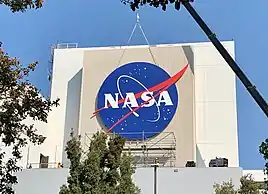Center for Near-Earth Object Studies
The Center for Near-Earth Object Studies (CNEOS) is NASA's center for computing asteroid and comet orbits and their probability of Earth impact.[1][2] This JPL Center computes high-precision orbits for Near-Earth Objects (NEOs). These orbit solutions are used to predict NEO close approaches to Earth, and produce assessments of NEO impact probabilities over the next century.[3][4]

CNEOS is the home of JPL's Sentry impact monitoring system, which performs long-term analyses of possible future orbits of hazardous asteroids, searching for impact possibilities over the next century. Similarly, its Scout system monitors new potential asteroid discoveries and computes the possible range of future motions. In the event of a predicted impact, impact time, location and geometry are estimated.[3][5]
CNEOS also provides the NEO Deflection App, which computes how far a hypothetical asteroid would move if deflected by a known amount at an earlier time.[3]
References
- "CNEOS".
- "20 years of tracking Near-Earth Objects | EarthSky.org". earthsky.org. Retrieved 2020-12-03.
- "Center for NEO Studies (CNEOS)". cneos.jpl.nasa.gov. Retrieved 2020-12-03.
 This article incorporates text from this source, which is in the public domain.
This article incorporates text from this source, which is in the public domain. - Talbert, Tricia (2019-02-12). "Near-Earth Object Observations Program". NASA. Retrieved 2020-12-03.
- "Center for NEO Studies (CNEOS) Archives". Universe Today. Retrieved 2020-12-03.